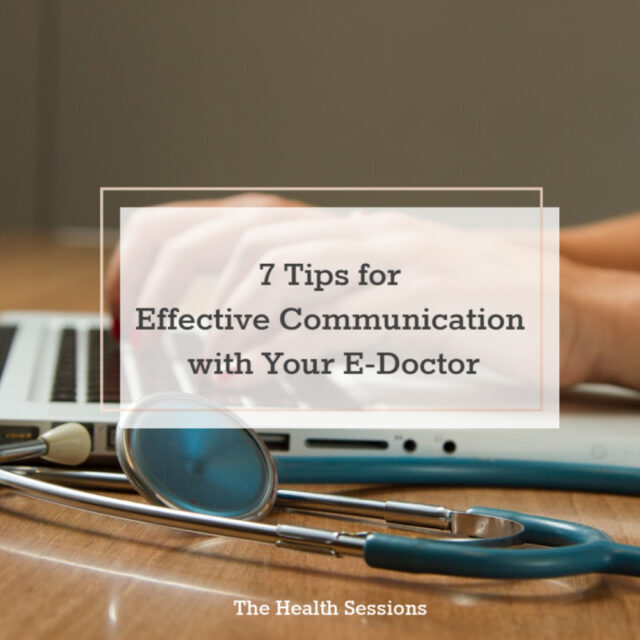Kaila Prins about Coping with Eating Disorders: “I see it as a challenge that I want to overcome every single day”

This article is written in collaboration with Laboure College.
Excellent communication is a fundamental part of any healthy relationship. Like any other healthy relationship, on a broad scale, it really applies to the doctor-patient relationship as well. When the main link of proper communication and understanding is broken between the doctor and patient relationship, a cascade of negative consequences can result. If the patient has not been able to express his or her symptoms, an incorrect diagnosis might be made.
The Joint Commission on Accreditation of Healthcare Organizations states in their study “Medical Errors and Poor Communication,” that communication errors are the leading cause of 60% to 70% of preventable hospital deaths. If the doctor hasn’t clearly got the idea of what their patient has to say about their symptoms, they may end up prescribing a wrong treatment plan. Bad communication inevitably leads to disappointment for both patient and doctor.
When your doctor is well experienced, you tend to listen to what he has to say rather than explaining your symptoms. But the conversation goes both ways. If you feel like a proper communication isn’t happening between you and your doctor, you might want to consider your communication options – especially in your e-consultation, where you will only have a fixed amount of time. Whether it is a video call or chat service with your physician, open communication plays an essential part in your e-consultation.
Here are 7 tips to help you have a more effective communication with your e-doctor.
As this is a virtual consultation, make sure you have a reliable internet connection at home. If the connection is not fast enough, there will be delays or communication gaps in your conversation, and you may need to give your doctor enough time to respond to your queries. As a virtual patient, you may need to ask a few questions to clarify the treatment procedure, just to make sure to ask them to restate what you heard or repeat themselves.
When you have booked an appointment for online consultation, your time is precious. And if you feel like your doctor is brushing off your symptoms, you may want to find another way to express your concerns. Restate your symptoms and the associated concerns you have with the illness. For example, if you are having chest pain, you may have other health concerns also. You may be worried about having a heart attack or something. What you can do here is to express your main issues and associated concerns.
If possible, start a few days or hours in advance by tracking your symptoms and other associated health concerns. Be honest and thorough because the details are very important. This doesn’t mean you have to mix up all your health concerns in a single visit. Mention your related, most pressing health concerns first. This will help you make the best use of the limited time you have for your online appointment.

Doctors tend to prioritize core concerns and diagnostic information early in the visit. But in a virtual meeting, make sure that your doctor knows the key concerns to help prevent the doctor from jumping into conclusions about the treatment. As a virtual visit, with benefits, it does have its own limitations as doctors are not able to check a person’s symptoms using his medical tools. So, in a single visit, speak up only relevant health concerns instead of mixing up. Address the important ones first. It’s not very uncommon for a patient to mention every worrying symptom, such as experiencing weight loss due to stomach ache.
It is very easy to get distracted at a doctor’s visit. Sometimes it feels like after the online appointment is over that it just happened in a blink of an eye. And all you remember will be the blurred memory of what points haven’t you told them, overall online meeting, and a medical prescription. If this is your first time attending an online consultation, try to calm down your mind before the meeting. If you think you will need a long time appointment, mention that in your online consultation form.
Before your meeting, take deep breaths and focus on what you have to say. And, more importantly, listen to what he or she has to say about your health and treatment programs. If it’s legal, you can ask your doctor if he or she is okay with you recording the meeting or chat service.
Don’t hesitate to ask questions! Even if your appointment is booked for a certain amount of time, if you didn’t get the unfamiliar instructions, ask them to repeat it again or ask them to explain it in a simple manner. You have the right to question the assumptions behind the proposed treatment plans, which may not seem viable in your situation. If you think you are nervous or too anxious about your health and the meeting, you can prepare your questions beforehand.
In the rush of an online visit, you may get distracted by low-quality internet connection, pets, or other family members, and forget what you have to say. If you have small children or other family members in your home, tell them you have a virtual consultation, and it should not be interrupted. Having prepared questions and concerns beforehand advances your e-visit.

Be honest with your doctor. Hiding information about your personal habits, symptoms or other things could lead to a wrong diagnosis. Things you are saying like, “it’s just a little cough” or “it doesn’t matter, it happens sometimes, it will surely go away in two or three days,” might lead your doctor to the same conclusion. But if the real fear is that you have a close relative who has lung cancer and started with the same symptoms, let the doctor know.
Small or big, if you think your symptom is relevant, say so. If nothing is serious, though, a few reassuring words or an appropriate test can put your mind at ease. Sharing relevant information about your health – both physical and emotional – improves the understanding between your patient-doctor relationship.
If you are taking any other medications, let your doctor know beforehand. You can send a picture of your previous medication details to your doctor using the medium you are using. This will help you to get more time with your doctor, and he or she can prescribe other medications based on this. This way, your doctor can better prescribe what side effects to expect, what will happen if you miss a dose, interactions of new medicine with the ones you are currently taking, how soon to expect to feel the difference, and all.
As you can see, digital health is fast-moving forward in the nick of time. And in the time of COVID-19 pandemic, we have been understanding digital health’s future capabilities as it will be an essential part of the healthcare structure. Even nursing conferences, medical consultations, webinars, online classes, and other things are all going digital. As per your prescription, make an appointment with the nearest lab to follow up on your treatment plan.
If you enjoyed reading this article, you might also like: